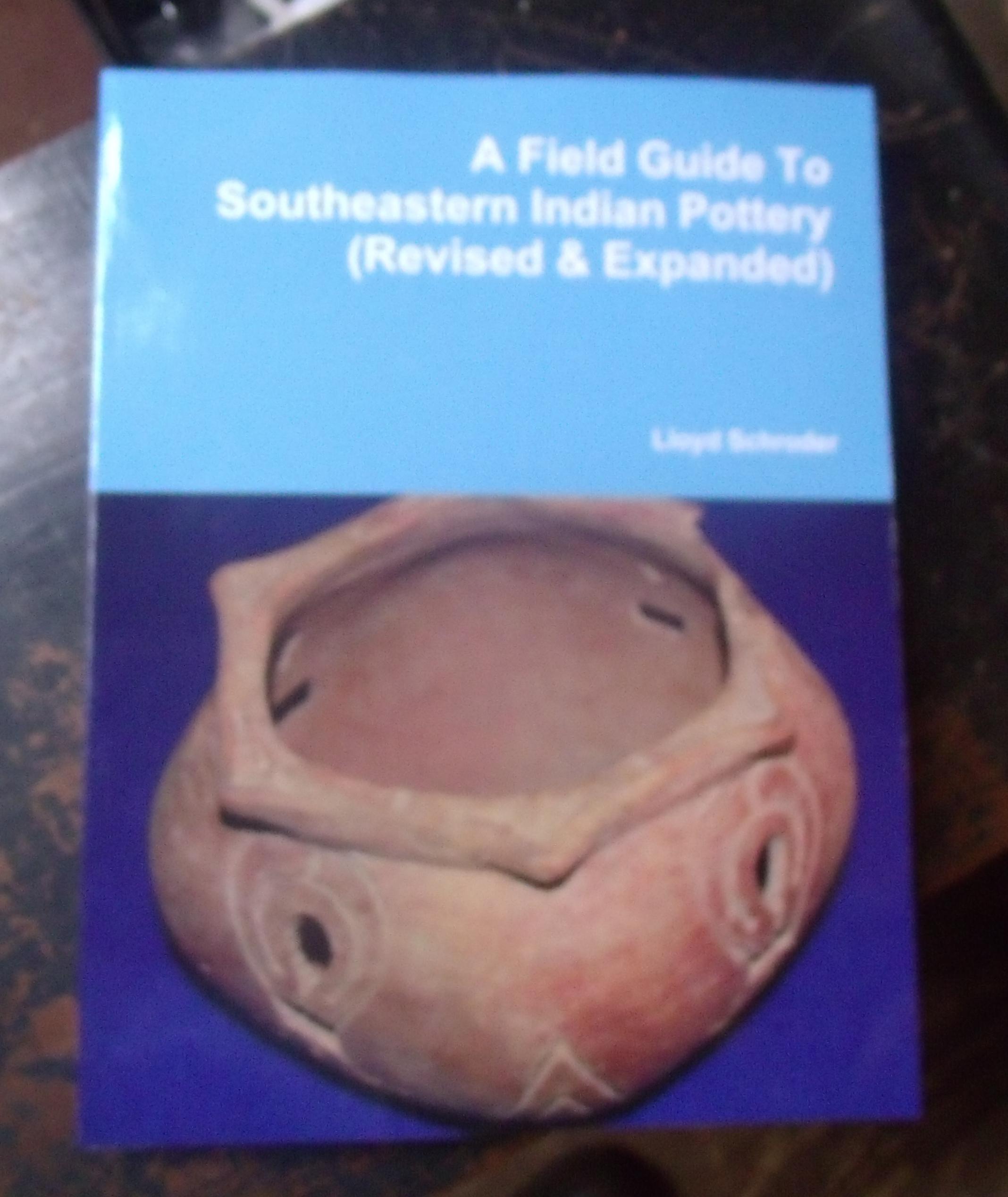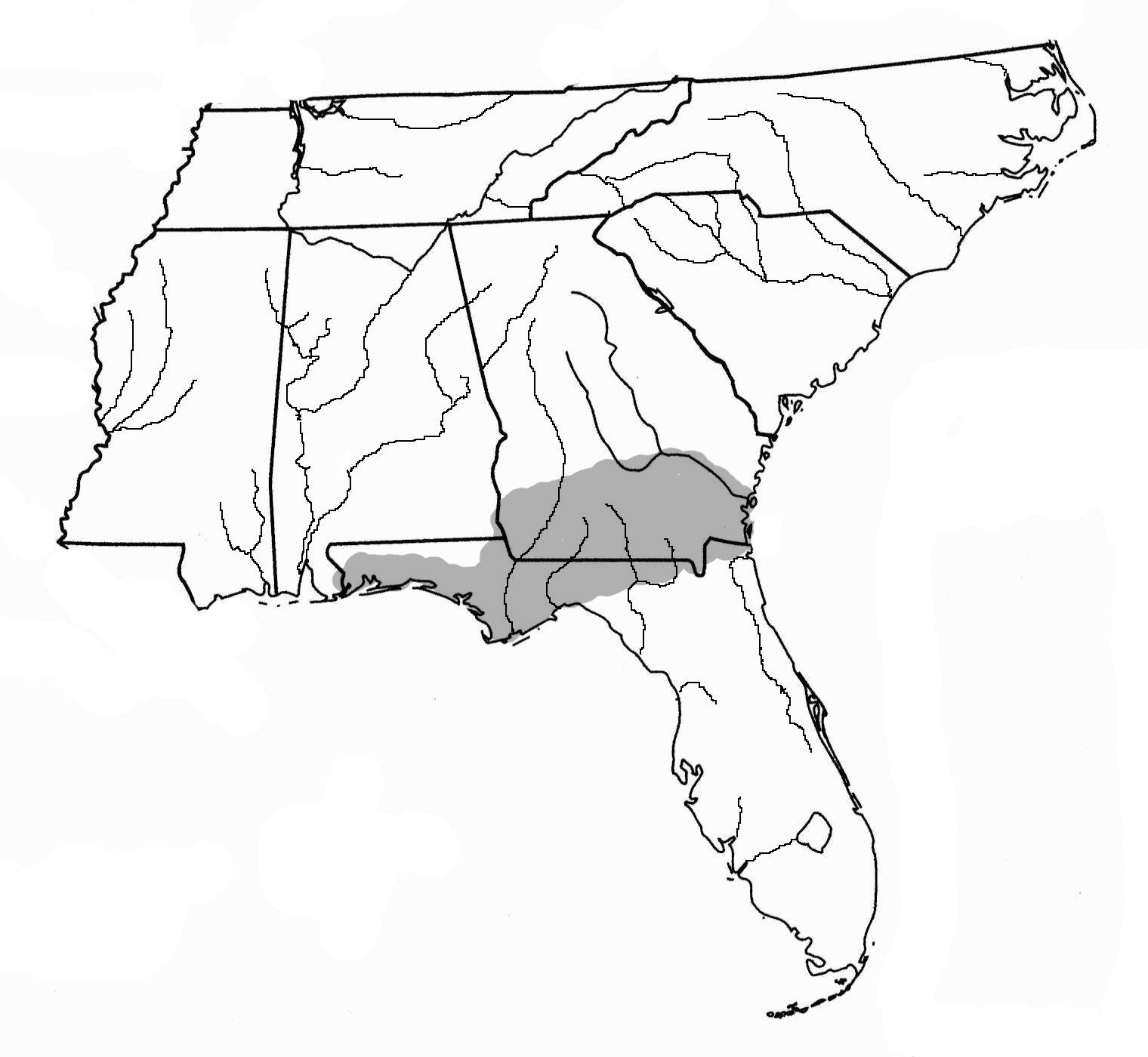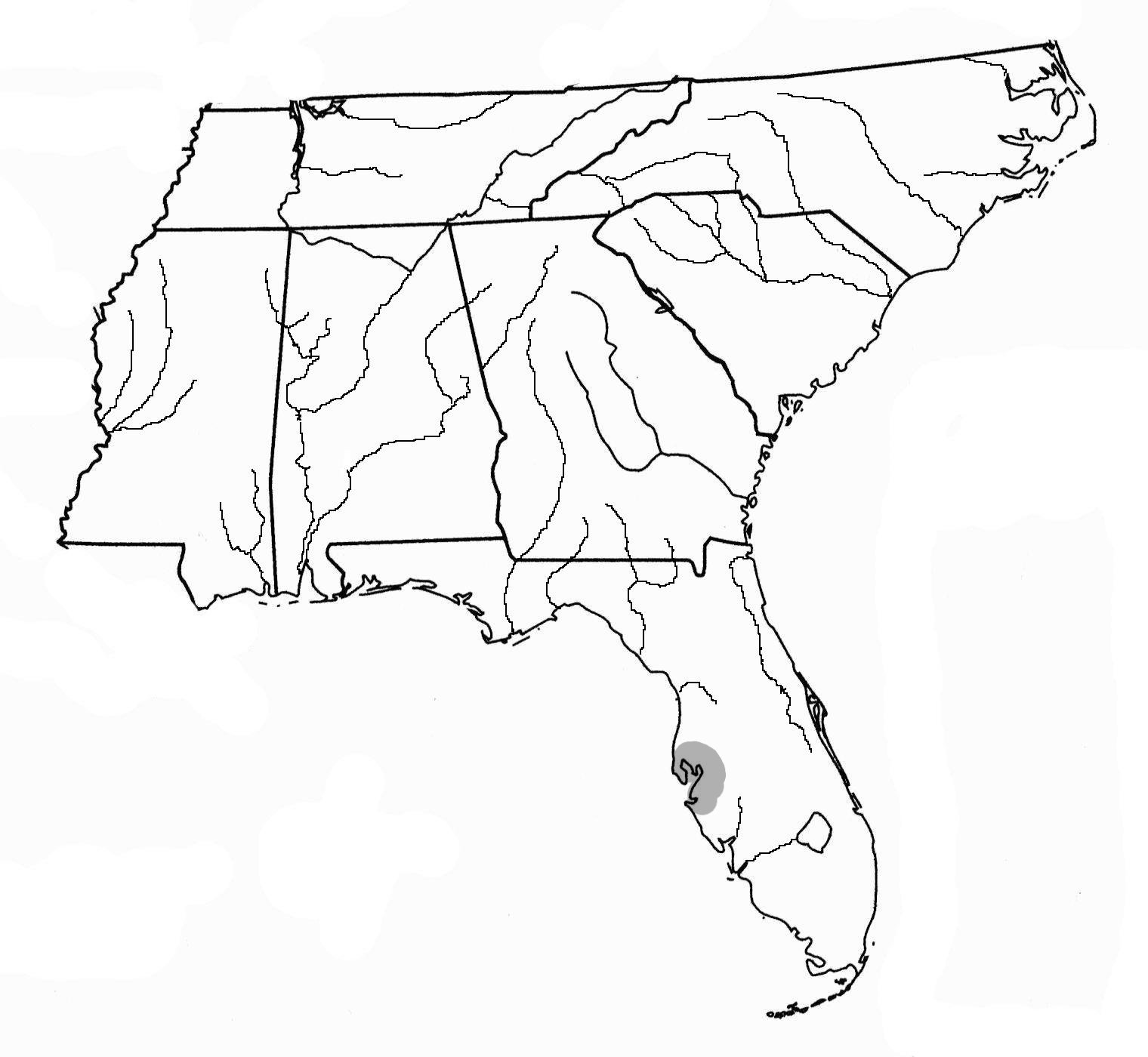For more detailed information on these and other pottery types within the Southeastern United States, please see our “Publications” page to order Lloyd Schroder’s Field Guide to Southeastern Indian Pottery (Revised & Expanded).
This amazing new book contains over 500 pottery types, each explained in very readable terms with thousands of illustrations and maps of distribution. The volume has earned the acilades of senior archaeologists like David Anderson of the University of Tennessee and well-known Georgia archaeologist Jerald Ledbetter. No serious student of archaeology should be without it.

a. Florida Museum of Natural History, b. C. B. More
Temper: Appears to be ground Clay opened (small, hard, angular pieces noted) or ground sherds in some cases. Some specimens tempered with fine to medium sand. Paste texture varies from course, lumpy, very contorted to fine-grained and slightly contorted. Color variation from chalky white, through buff and red-buff. Also gray-black. Core is sometimes gray-black, or interior half of the sherd great-black with exterior half fired to a buff.
Distribution: Most common in Northwest Florida, but found in village sites and in burial mounds as far South and East as Tarpon Springs and Tampa Bay.
Age: Marker of the Santa Rosa-Swift Creek period. Vessels are occasionally found in mounds which show predominance of Weeden island period types, Middle Woodland.
Vessel forms: Flattened-globular bowl, squared flattened-globular bowl, collard globular bowl, cylindrical beaker, squared beaker, and multiple-orifice vessels. In-curved rims with exterior or marginal thickening on the direct, unmodified out slanting rims. Lips are flat, rounded-flat, and round-pointed. Bases are round, flat and circular, and flat and squared. appendages our bird head effigies are fixed to rims.
Decoration: Broad-incisions made in the semi-soft clay of the vessel before firing and areas of notched or on notched rocker or roulette stamping. Designs consist of opposed plain and rocker-stamped areas. Incised figures are vaguely bird-like in several instances. More often they are undefined curvilinear and rectilinear figures. In some cases the actual design or figure represented is left plane and the background is filled with stamping. The filling-in of the design with stamping, leaving the background plain, is also represented. Incised lines are usually from 3 to 5 mm wide and are around-bottomed. This stamping, if done with a rocker, may be the result of rocking the edge of a thin instrument back and forth on the vessel surface. The zigzag lines may be smooth or dentate. This same effect could have been produced by using a small notched-edge disc. The general impression is one of boldly but surely executed designs. There is little detail. All figures are expressed by wide, flowing bands. Designs cover most of the exterior vessel body except the base.

Wayne Porch collection
Temper: Fine Sand and mica. Surfaces usually buff with fire-clouding. Occasionally surfaces are entirely gray to black. Interiors are smooth to nearly polished.
Distribution: Northwest coast of Florida, particularly around Carrabelle and to the east.
Age: Middle Woodland, Santa Rosa Swift Creek period.
Vessel Form: Pots with slightly outflared orifice. Rims are slightly outflared, lips are scalloped or notched.
Decoration: Rectilinear zigzag lines or chevrons. These chevrons are continuous down the sides or around the body of the vessel. They are very close-spaced. The design differs from a “herringbone” motif in that there are no lines connecting the angles of the nested chevrons. Angle of chevrons varies from slightly acute to very obtuse. Overlapping of the design is fairly common.

Florida Museum of Natural History
Temper: Differs from the early variety by being tempered with coarse sand and uncrushed grit, producing a rough and granular surface.
Distribution: Northwest Florida coast, same general distribution as early variety
Age: Middle Woodland, Weeden Island I period
Vessel Form: There is insufficient data to determine form.
Decoration: Same as Early variety, but application of stamping is poor.
Gordon R Willey
Temper: Sand. Core is black, gray, or dark brown. Surfaces often buff. Interior smoothing excels exterior surface treatment. Thickness averages 8 to 9 mm.
Distribution: Mostly from Tampa Bay vicinity.
Age: Middle Woodland, Weeden Island II period.
Vessel Form: Deep, open bowls and jars or bowls with in-curved walls. Very small, rounded exterior rim folds are sometimes used. Lips are round-pointed and some triangular rim projections.
Decoration: Wide-spaced scallop shell impressions from back of shell. Each unit application has 3 or 4 bars, each bar being about 1 mm. wide and 8 mm. long. Between bars are rows of tiny dots which are a part of the same impression. When edge of scallop shell is used, the applications are close-shaped, giving the effect of rows of small, round dots, comma-shaped dots, or triangular dots. There is considerable overlapping of these rows of dots, and the rows have no particular orientation on the vessel.

Ocmulgee National Monument
Temper: Sand and grit
Distribution: Lamar Complicated Stamped is found throughout most of Georgia and into adjacent Alabama, Florida and South Carolina. Similar types are seen in North Carolina and eastern Tennessee. In Florida it occurs as far south as Tampa Bay, but these occurrences may be only the result of trade. Eastern extension in Florida not well known but probably occurs there only as trade if at all.
Age: Late Mississippian, Lamar period in Georgia and contemporary with Fort Walton. Along the coast of Georgia, Lamar (Irene) stamped pottery continued longer. Florida Gulf coast occurrences are in the Safety Harbor periods.
Vessel Form: Pot forms slightly constricted below the orifice, but with out-flaring rims. Bases rounded. Rim is folded or additional clay strip and then pinched or crimped.
Decoration: Impressions of carved paddle or stamping unit. Designs are complicated and composed of curvilinear and rectilinear elements. The Florida specimens from the Parish Mounds show a circle-and-dot and a complicated connected-rectangle design.

a. Jim Tatum collection b. Gordon R Willey
This type was named after Leon and Jefferson Counties in Florida as part of the historic Apalachee pottery complex. Hale Smith originally called this Jefferson Complicated Stamped, a part of his Jefferson Ware complex, but the term Leon-Jefferson has become the standard name for this type.
Temper: grit and sand as a rule but occasionally course quartz or crushed sherds. Surfaces are smooth. Core is gray, brown, or black.
Distribution: Georgia, eastern Alabama, and parts of South Carolina. In northwest Florida only as occasional pieces.
Age: the Lamar period in Georgia, particularly the latter part of the period. In Northwest Florida it occurs in the Leon-Jefferson period, late Mississippian to historic periods.
Vessel forms: shallow and deep bowls. Rims are plain and lips are rounded.
Decoration: there are plain and 4 complicated stamped types within the where group. These stamped types include the following motives: (1) concentric rectilinear figures; (2) concentric circles with raised-.centers; (3) a pattern of triangles and circles; and (4) herringbone figures. The plain type is characterized by a pinched or pointed rim which has sometimes been folded over before pinching treatment.

Lloyd Schroder collection
Temper: Diatomaceous earth
Distribution: Tampa Bay and Manatee regions of Florida. Occasionally found further north and sometimes eastward to the St. John’s area.
Age: dates to the middle Woodland, Weeden island II period
Vessel forms: large vessels suggested. Deep bowl or pot form. Slightly out slanting or in curving walls and rims. Lips almost flat.
Decoration: incision and dentate stamping on soft, unfired clay of vessel. Incised lines are round-bottom and 2 to 3 mm wide. The dentate stamp is applied direct and not in rocker fashion. Unit of stamp would appear to be a single row of 4 or 5. The dentate unit was impressed in close-spaced arrangement. Giving the treatment surface the appearance of being filled with close-spaced plantations or dots. The design is rectilinear zones 2 to 4 cm in width which are made by outlining with incision. They are arranged checkerboard fashion and alternate as plain rectangles and rectangles filled with dentate stamping.

Lloyd Schroder collection
Temper: Diatomaceous earth
Distribution: Central Golf Coast and Manatee region into the border counties of Georgia.
Age: middle Woodland, Weeden island II or possibly earlier.
Vessel forms: simple, open bowls with unmodified rims
Decoration: Rows of shell-edge stamping spaced about 2 to 3 mm apart. Each shell-edge impression is about 8 mm long. Stamping occurs in a border below the vessel rim. Border is often underlined with incised line.

Florida Museum of Natural History
Similar to Tampa Complicated but diatomaceous earth tempered and related to Weeden Island II period rather than the earlier Late Swift Creek period.
Temper: Diatomaceous earth
Distribution:Tampa Bay area
Age: Weeden Island II period, Middle Woodland
Vessel forms: Unknown
Decoration: Complicated stamp designs of concentric circles and also concentric circles as part of a larger and more intricate design. Execution is poor with overlapping of impressions.
